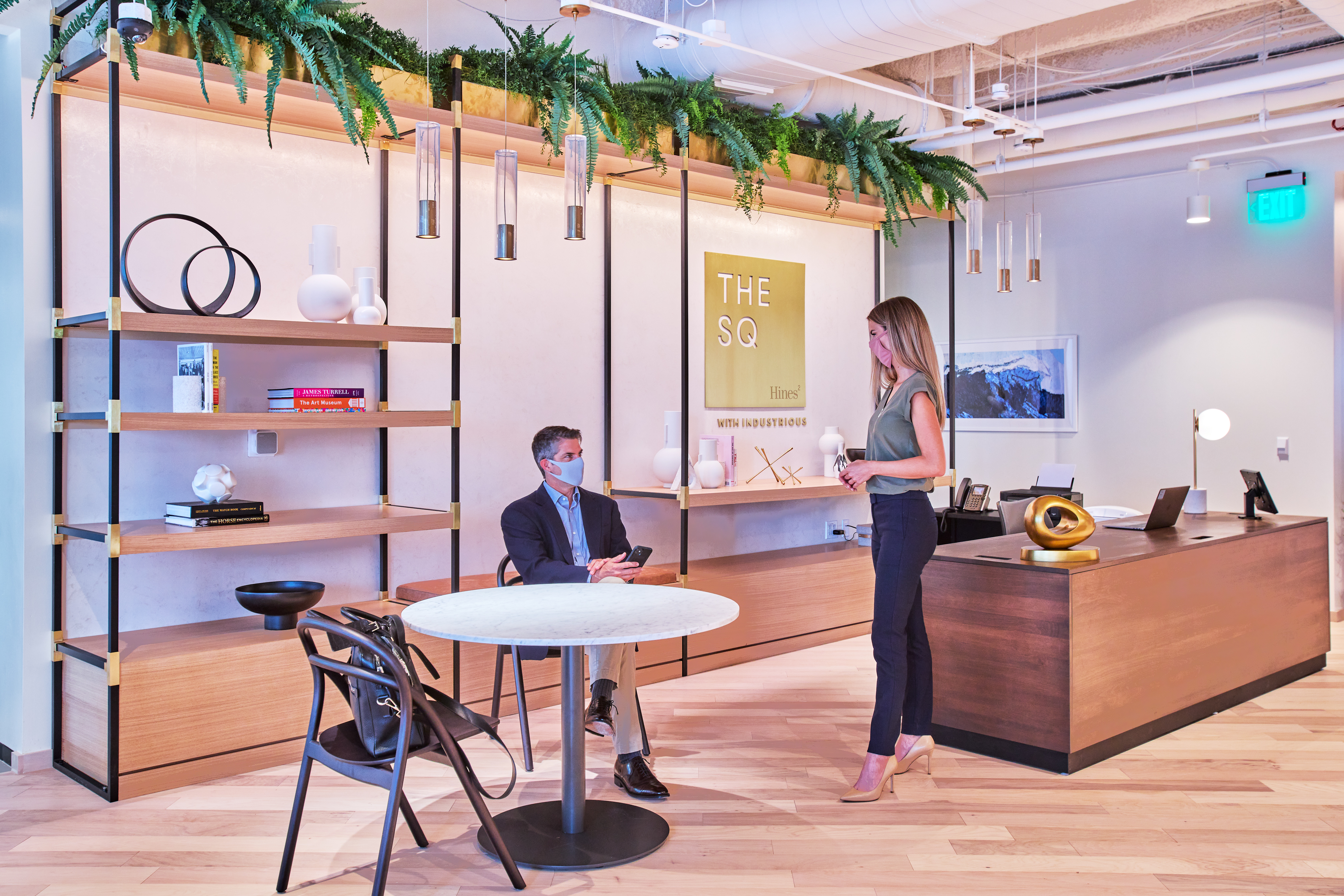Flexible Workspaces vs. Coworking: What's the Best Choice for You?
In the past few years — and particularly during the pandemic — there’s been a lot of talk about the “future of work.” Remote work and hybrid work models are now commonplace, with more and more companies embracing the agility and flexibility they provide. In other words, the future of work is here and now.
To accommodate this new norm, businesses are increasingly looking for ways to approach office space differently.
Two options that frequently come up are coworking and flexible office spaces. They sound similar (and in many ways, they provide similar services and benefits), but there are key differences to consider if you’re deciding between the two. Here’s what you need to know:
Benefits of both coworking space and flexible office space
Before we dig into the differences between traditional coworking space and flexible office space, let’s take a closer look at the lingo, then discuss the similarities between them.
“Flexible workspace” is an umbrella term for shared office space that includes a variety of options, including coworking centers, on-demand single desks, executive suites, and private offices. As a concept, flexible workspaces are designed to provide teams and individuals with different ways to work depending on their needs at that moment.
Both coworking space and flexible office space have some overlapping characteristics and benefits. For one thing, they aren’t just for freelancers and start ups, as some may think — these serviced office spaces can be great options for businesses of all sizes, from solo entrepreneurs to large enterprise teams.
Benefits include:
- Shared amenities (e.g. secure WiFi, coffee, printing, front desk team)
- Less upkeep — you’re not in charge of building management, utilities, or cleaning
- Open layout with a variety of different spaces and seating options available
- Fully furnished
- Potential for improved employee engagement and satisfaction
Most importantly, they both tend to have flexible leasing options, ranging from days to months to three years depending on the needs of your business. That’s good news for agility.
What is a coworking office?
Coworking spaces tend to have open-concept layouts that offer a wide variety of seating options (single desks, communal tables, lounge areas, etc.).
At most coworking offices, space is first come, first served, though a few providers may offer reservable “hot desks” or dedicated desk space. Some meeting areas (like meeting rooms with video conferencing setups and whiteboards) may be available for reservation but, depending on your lease, the number of times you use them per month may be restricted.
Coworking spaces tend to focus on community building and networking; many different companies and individuals can come together, and the atmosphere is generally on the casual side.
For individuals and very small teams, coworking space can be quite cost-effective. But for larger teams, coworking can be cost-prohibitive, as leases are often based on the number of individuals working there rather than square footage.
What is a flexible office?
Flexible offices (aka “flex offices”) usually offer more privacy than coworking spaces, with designated areas for teams to have their own space. Like coworking spaces, they include open-concept areas and shared amenities, but the emphasis is more on dedicated space for each business, and the overall atmosphere tends to be more professional.
This type of office space is particularly agile, and can scale up and down as your team’s size and needs change. For example, flexible space offerings from The Square by Hines include:
- On-demand space
- Private offices – ideal for teams of 1-8
- Flexible suites – ideal for teams of 9-25
- Enterprise suites – ideal for teams of 25+
Unlike coworking spaces, leases for flexible offices are usually based on square footage, not the specific number of team members using the space. For teams that need more flexibility in the number of individuals who will use the space from day to day, flexible offices are a better fit.
Conclusion
If you’re not sure what to look for when renting office space, deciding between flexible office spaces and coworking spaces is a good place to start. Both allow for flexibility, but depending on your team’s size and work style, one may make more sense than the other.
If you’re looking for maximum workspace flexibility, discover The Square by Hines. Contact us to book a tour.
